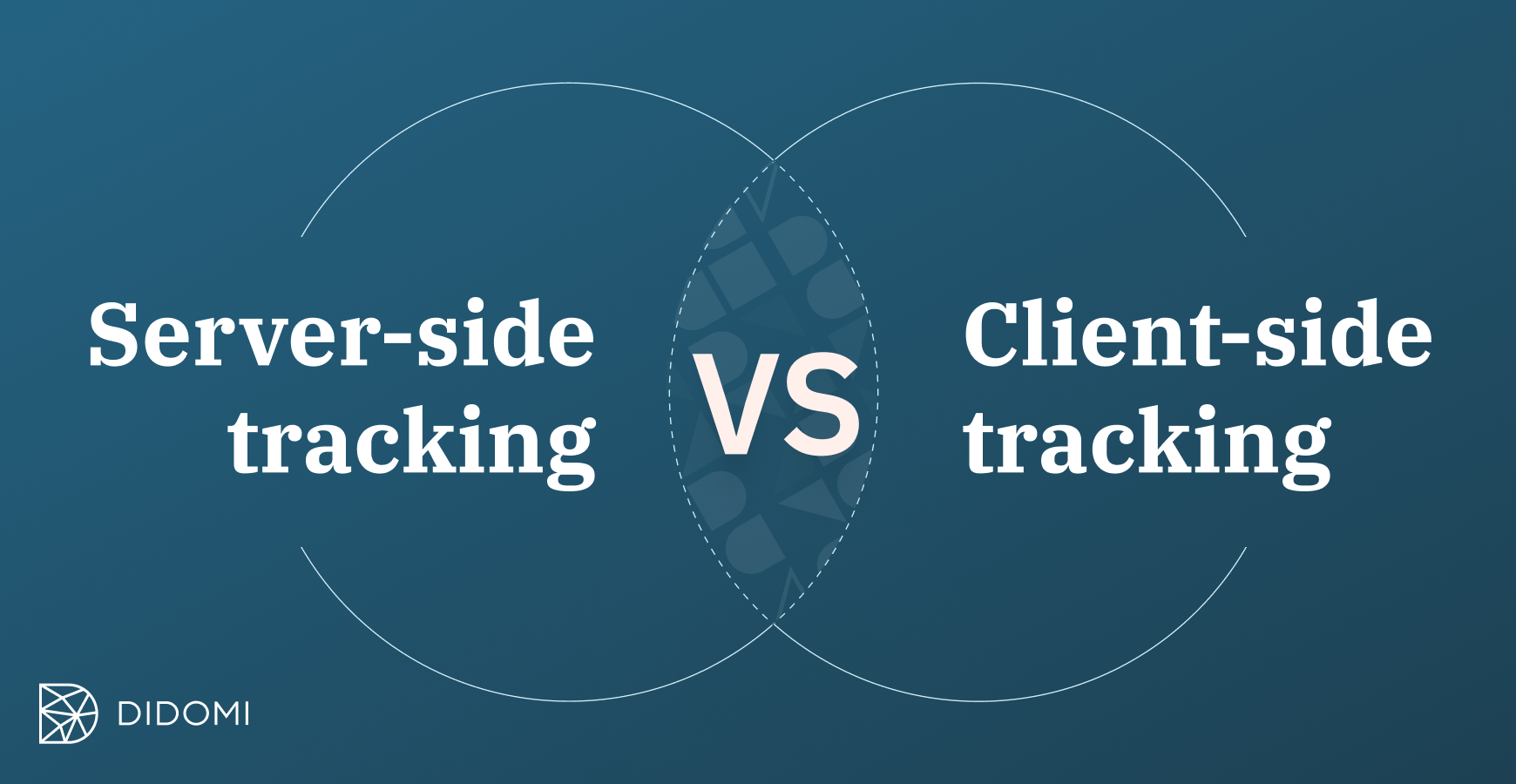Tracking blockers, vendors who do not respect regulations (e.g. IAB TCF) and browser restrictions like the intelligent tracking prevention of Safari or the enhanced tracking protection of FireFox reduce data quality and increase legal risk in digital marketing. Server-side tracking offers a solution that relies on first-party data, reducing such restrictions. How do you determine if you should track your users server-side or client-side? Which option is the best choice for you? Carry on reading for more information.
Summary :
-
What are the main differences between client-side and server-side tracking?
-
When should you use client-side tracking versus server-side tracking?
-
How can Didomi help you to be compliant while using a server-side solution?
|
Yes We Trust Summit: Didomi organised a worldwide event on October 7th 2021 on how privacy drives business What is personal data, and who should it belong to? What value can companies place in data today? How can companies place trust in their raw data, how can it help take better decisions and be used in new ways without infringing privacy regulation? Watch the replay to know more.
|
.png?width=1200&name=YWT_Speakers%20(rectangle).png)
The decline in client-side tracking
Client-side tracking is seen as the most common form of data-collection. This type of tracking involves the collection of data from a user’s browser, most likely via tag management, such as Google Tag Manager.
However, the increasing use of adblockers reduces the capacity of client-side tracking, acting as an obstacle in the digital advertising ecosystem.
The problem becomes forefront when we consider the increasing restrictions to third-party cookies. The words "cookieless future" are on everyone's lips, as Google Chrome announced the phase out of third-party cookies by 2023.
If not enough valid data is available, browser-based tracking goes hand in hand with a loss of data quality. Marketing activities become more difficult - and result in reduced customer engagement and ineffectively used budgets.
What does it mean to track server-side versus client-side?
It’s clear that with the phase out of third-party cookies, tracking client-side will become increasingly problematic.
Whilst client-side tracking is still currently seen as the most common method of data collection, an alternative is becoming increasingly prominent: server-side tracking.
What is server-side tracking?
On the web, the client is a web browser or mobile device - whatever the user is using to navigate the internet. The server is a computer that returns content to be rendered in your browser or mobile app.
Server-side tracking (cloud-delivery) is commonly described as events and data collected on the server from the client.
The process follows when the server sends a request to any final configured endpoint.
This process is commonly known as a tag or a "pixel" request. The difference is that the server sends a request to the final endpoint instead of a direct request from the client.
What are the main differences between client-side and server-side tracking?
Both server-side tracking and client-side tracking have their benefits. And it’s not a question of choosing one over the other - server-side tracking can be used as a supplement to client-side tracking.
However, what are the main differences, and which type of tracking best suits your needs?
Client-side:
Despite concerns about the phase out of client-side tracking, there are some key benefits to this form of data collection.
-
Direct access to data: Since the client-side tracking is about the user's device, this form of data collection gives direct access to more concrete user data that could be used for ad targeting.
-
Implementation: Since client-side tracking has been very commonly used, it's most often seen as the standard option. Therefore, it's often easy to implement with a pre-prepared code snippet.
-
Lower cost: client-side tracking is usually considered a lower cost compared to server-side.
Server-side:
However, server-side tracking can be seen as a more reliable, secure and controllable way to track events, as it does not request directly from a client’s browser. This makes it very useful when dealing with sensitive information.
Here are some key advantages to server-side tracking:
-
More control over the data and higher security: Self-collected data remains in control of the advertiser and cannot be viewed or used by third-party providers. This brings more security for the company.
-
More independence: With server-side tracking, companies are less dependent on browsers. This minimises problems like browser restrictions or adblockers.
-
Optimized analytics & marketing: The data collected can be used as a base for marketing automation, analytics, personalization tools.
-
Smoother user experience: server-side tracking removes the processing aspect in regards to information moving from a client’s device to the cloud.
-
Increased site speed: Much higher site speed in regards to the front-end since there are no analytics pixels that could get in the way. Since server-side has the possibility to speed up your site speed, it will not only improve user experience, but also SEO.
Nonetheless, it is worth noting that server-side tracking requires the maintenance of an additional tech infrastructure, which can be very expensive.
-png.png)
When should you use client-side tracking versus server-side tracking?
Put simply, there are advantages and disadvantages to both client-side and server-side tracking. Therefore, it’s important to look into all the aspects regarding which tracking alternative is the most fitting for your company.
There are several aspects that we think you should consider depending on your circumstances, engineering resources and, of course, how you value privacy.
Owning data sovereignty:
By not using browser tracking, no client-side data processing is required. Self-collected data remains in control of the advertiser and cannot be viewed or used by third-party providers. Server-side tracking is an essential component of consistent first-party data management, which is becoming increasingly popular in the industry as an alternative to third-party data.
Level of security:
Server-side data processing brings more security. The direct implementation of data collection in the server is particularly suitable for companies that work with sensitive and business-critical data, such as banks, financial service providers or online retailers. However, it is always important to ensure that the data collected is handled just as carefully as client-side data and checked for compliance with data protection guidelines. At the same time, it is also necessary to inform the user about the collection and processing of the data.
Engineering capabilities:
Server-side is able to track most things that are tracked client-side. However, there are certain situations where events would be too complicated to replicate on a server, such as IP address collection. Ultimately, some events are naturally client-side.
Performance:
One performance aspect to keep in mind is the usage of Ad blockers. If the user has activated an adblocker, it will be more difficult to access important data client-side.
Another performance aspect is data quality. Server-side tracking can enrich data analytics. Via the tracking library, data is forwarded directly from the server to the target system, which can be a customer intelligence solution or a docked marketing automation platform. The diversions via the browser are eliminated, preventing inaccuracies and data loss. Valid user data is available and can be used specifically for fine-grained addressing.
Thanks to the seamless transfer, analysis and further utilisation of the data is uncomplicated and - since no scripts are used - significantly faster. Campaigns can thus be targeted precisely and enriched with valuable real-time data.
User matching:
This is actually the most complex obstacle to server-side targeting. Third-party cookies, which are used for “user matching” or figuring out the anonymous ID that corresponds to a user and matching that up to an advertiser’s anonymous ID for that user, does not exist when server-side targeting.
In a nutshell, third-party cookies can only be read via web browsers, not on servers. However, with the gradual phase out of third-party cookies, more and more publishers are testing first-party and ID solutions.
How can Didomi help you to be compliant while using a server-side solution?
What is important to know is that user consent is also key in a server-side solution. This is where Didomi enters the playing field.
The good news? We provide different ways to integrate our platform within a server-side solution. In fact, some of our clients are using this already.
Didomi provides several ways to use our platform server-side. Didomi clients can integrate our Consent Management Platform server-side, instead of, or in addition to, client-side.
Requirements and usage are described in the table below:
|
Option 1 - Client- and server-side |
Option 2 - Full server-side |
|
|
Requirements |
Didomi CMP + API |
Didomi CMP + API
If client uses the IAB TCF, client needs to subscribe to a private CMP to IAB (additional cost)
|
|
Process |
CMP deployed using Didomi's web SDK. Data is pushed automatically to Didomi's back-end. Client uses own API to push data to his back-end. |
Client manages his own notice banner (UI & behavior). Client uses Didomi's API to push data to Didomi's back-end. Didomi is needed to generate and host the consent string for IAB. |
This is a quick introduction into the key differences and benefits of client-side versus server-side tracking.
If you are interested to learn more about this subject, or to hear our thoughts on what the best solution might be for you, do not hesitate to book a demo with us today.










